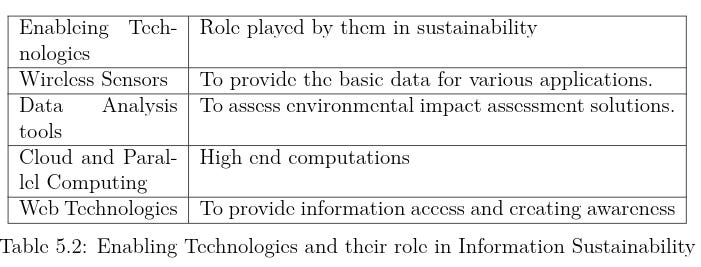Two different kinds of roles can be assigned to ICT in the context of environmental science and engineering. These are referred to as green ICT and ICT for environmental sustainability. These roles are described in this section.
1. Green ICT
The first kind of role is known as green ICT. The green ICT may be defined as analyzing the direct effects of ICT on the environment and reducing the ecological footprint of ICT through proper design, manufacture, use, and final disposal of ICT equipment and services.
One way of realizing green ICT is by highlighting energy efficiency as a prime concern during product and services development. The green ICT emphasizes that hardware or software artefacts should be energy efficient, meaning that they should consume a minimal amount of energy. For example, the US Environmental Protection Agency provides certification called Energy Star certification based on the energy consumption of various ICT related products such as monitors and servers. These certifications norms change from time to time to time. From the year 2020, monitors complying with the Energy Star Version 8.0 are considered the most energy-efficient. Such energy-efficient products usually carry the logo shown in Figure \ref{logo}.
Another way of evaluating ICT products and services is to measure their carbon footprint. The table below shows the carbon footprint of desktops, servers, laptops and data centres. These are average values and they may vary for a specific product or a service.
Some of the researchers have attempted to analyze the energy efficiency of programming languages. They used a standard benchmark called Computer Language Benchmark Games (CLBG). The analyse and ranking of these programming languages as per energy consumption, the memory needed to execute the program and time taken are shown in Figure. From Table \ref{ee} it can be observed that the languages C, Rust, C++, Ada and Java are the top five energy-efficient languages.
Source: Pereira, Rui, et al. "Energy efficiency across programming languages: how do energy, time, and memory relate?." Proceedings of the 10th ACM SIGPLAN International Conference on Software Language Engineering. 2017.
2. ICT for Sustainability
The term ICT for sustainability refers to ICT applications for managing the environmental sustainability of societal activities that originate in other domains or developmental sectors. Such an application aims to minimize the environmental load caused by humans. The goal of reducing environmental burden can be achieved in three different ways.
By creating awareness about environmental sustainability: First, using ICT to create awareness about the ecological impact of the actions performed by a human, or in other word empowering people with correct information about the consequences of human activities.
By reducing consumption of unsustainable Resource Second, by designing ICT based solutions to reduce the usages of unsustainable resources such as fuel energy.
By operationalizing interconnected systems to reduce overall environmental load} The third is to use ICT based solutions to interconnect multiple systems and optimize their operations to minimize their environmental load. For example, Industry 4.0 is an interconnected system to automate manufacturing processes. It can be operationalized to reduce the environmental burden.
The below table identifies some of the technologies and that are crucial for sustainability and describes the role played by them. Despite the maturity of these technologies, deploying solutions based on these technologies is often challenging. These challenges vary from information overload, data privacy, security, lack of proper knowledge about the benefits of ICT based solution and social issues.

















Environmental Perspectives of ICT